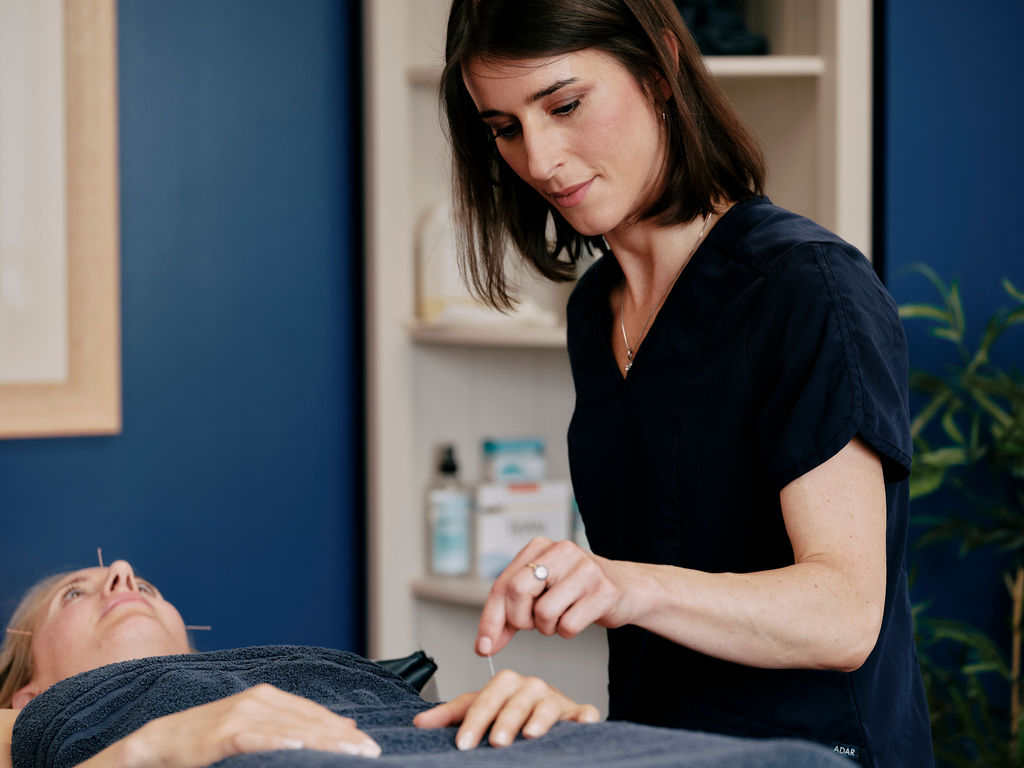Skin
There are many different kinds of skin conditions such as acne, eczema or psoriasis and the treatment for each is somewhat different.
In the UK, around 15 per 1,000 people have acne (1). Eczema affects around 15-20% of school-age children at some stage, but also affects some 2-10% of adults such as mature female acne and hormonal acne (2). Psoriasis (chronic plaque psoriasis or psoriasis vulgaris) is a chronic inflammatory skin disease affecting around 2% of people in the UK. In some patients, symptoms are mild, while in others they can cause physical, social and psychological disability.
Conventional treatments include topical products containing azelaic acid or benzoyl peroxide for mild acne, topical or oral antibiotics, topical or oral retinoids and, for women, pills containing anti-androgens (eg Dinette).

Your treatment plan
After a thorough medical history and examination procedure treatment needs to address the underlying causes and any exacerbating factors.
Acupuncture
In general, acupuncture is believed to stimulate the nervous system and cause the release of neurochemical messenger molecules. The resulting biochemical changes influence the body's homeostatic mechanisms, thus promoting physical and emotional wellbeing (3). Certain acupuncture points have been shown to affect areas of the brain that are known to reduce sensitivity to pain and stress, as well as promoting relaxation and deactivating the ‘analytical’ brain, which is responsible for anxiety (4).
Massage
A combination of bodywork such as tui na, acupressure, massage, reflexology, relaxation, breathing and mindful awareness exercises are also a core strategy that has proven helpful for many people.
Other Lifestyle factors - Creating restful sleep patterns, making sure you have the right diet, nutrients and nourishing eating habits are also key, as well as addressing any emotional issues that may be involved.
British Acupuncture Research Fact Sheets - For further information please take a look at the related issues section on the right hand-side of the screen.
- Schofield JK et al. Skin conditions in the UK: a health care needs assessment. First edition. Nottingham: Centre of Evidence Based Dermatology, 2009.
- Kay J et al. The prevalence of childhood atopic eczema in a general population. J Am Acad Dermatol 1994; 30: 35-9. Williams HC, Wüthrich B. The natural history of atopic dermatitis. In: Williams HC (Ed). Atopic dermatitis. The epidemiology, causes and prevention of atopic eczema. Cambridge: Cambridge University Press, 2000. Poyner T. PCDS atopic eczema guidelines optimise GP management. Guidelines in Pract 2001; 4: 1-9.
- Wu MT et al. Central nervous pathway for acupuncture stimulation: localization of processing with functional MR imaging of the brain-- preliminary experience. Radiology 1999 ; 212: 133-41.
- Wu MT et al. Central nervous pathway for acupuncture stimulation: localization of processing with functional MR imaging of the brain-- preliminary experience. Radiology 1999; 212: 133-41.
